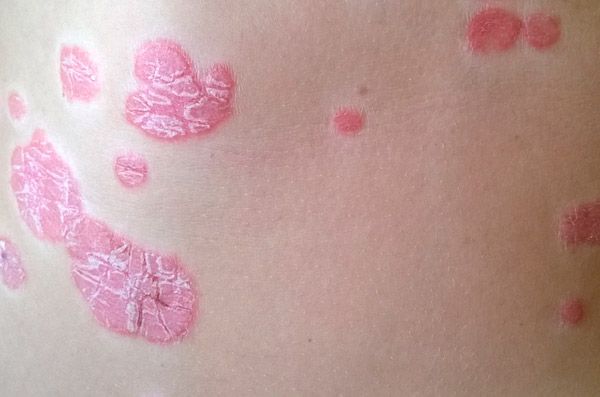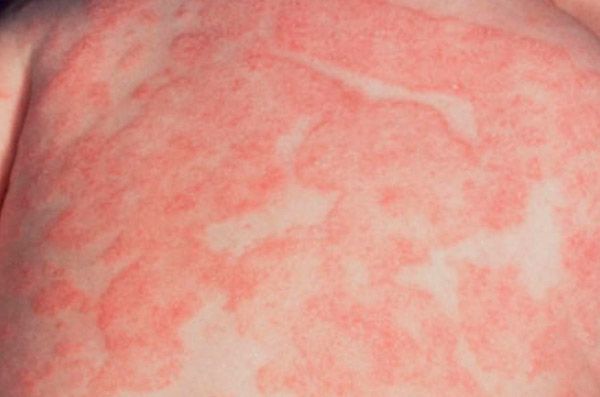
All iLive content is medically reviewed or fact checked to ensure as much factual accuracy as possible.
We have strict sourcing guidelines and only link to reputable media sites, academic research institutions and, whenever possible, medically peer reviewed studies. Note that the numbers in parentheses ([1], [2], etc.) are clickable links to these studies.
If you feel that any of our content is inaccurate, out-of-date, or otherwise questionable, please select it and press Ctrl + Enter.
Stages of psoriasis
Medical expert of the article
Last reviewed: 08.07.2025
The way psoriasis manifests itself depends on the stage of the disease. In clinical dermatology, there are three main stages of psoriasis: progressive, stationary and regressive. Although some divide the course of psoriasis into four stages - with the initial or early stage being distinguished.
Progressive stage of psoriasis
The progressive stage of psoriasis can only be defined as the initial stage of psoriasis at the first manifestation of symptoms of this chronic disease, since only the progression stage is repeated in the psoriatic cycle.
At the initial stage, the main symptom of common plaque psoriasis (which is diagnosed in more than 80% of cases) are red or intensely pink papular spots of a round shape on the elbows and knees, as well as on the skin of the lumbar region and scalp - in the form of small thickened plaques, the top of which is squamous, that is, covered with scales (dry silvery-white plates of keratinized epidermis). Often, erythematous elevations are framed by a narrow dark red border (growth crown), behind which the skin is completely healthy.
In addition to itching of varying intensity, the rashes that manifest the initial stage of psoriasis have three characteristic signs. Experts call them the psoriatic triad. Firstly, the keratinized plates peel off quite easily if the plaque is scraped slightly (dermatologists call this the stearin spot symptom).

Secondly, after forced desquamation, a thin shiny layer resembling a film is clearly visible on the plaque. Doctors call this sign a terminal (border) film. Research has shown that this is evidence of a significant reduction or absence of the granular layer of the epidermis.
And finally, the last sign: pinpoint blood (“blood dew”) on the film of the psoriatic plaque with further mechanical action.
The initial stage has different duration, and the further course of the disease may slow down for some time at the level of initial rashes and the presence of so-called "on-duty" plaques. Or the progressive stage of psoriasis may continue - with an increase in the size of existing plaques, the appearance of new spots all over the body and their merging. When the rashes are continuous and cover significant areas of the skin, we are talking about psoriatic erythroderma.
Stationary stage of psoriasis
The stage of disease development at which new spots stop appearing, old plaques do not increase in size and become flatter and paler (with a bluish tint) is defined as the stationary stage of psoriasis.
But the intensity of desquamation increases significantly. At the same time, if at the initial stage of the disease the peeling was concentrated in the center of the plaques, then at the stationary stage the entire surface is covered with a layer of keratinized particles.
Also, many patients experience a symptom known as a pseudoatrophic halo – slight lightening of the skin around the plaque.
The duration of this stage varies among patients, but even if there are no new rashes for a long time, this does not mean that psoriasis has “gone away.”
The course of this chronic disease is unpredictable, and the stationary stage of psoriasis can either be replaced by a regressive stage, or the stage of exacerbation of psoriasis develops. This is due to the individual characteristics of the body and the activity of the innate and adaptive immune system, the hypertrophied reaction of which to various triggers leads to the stimulation of accelerated proliferation of keratinocytes.
Regressive stage of psoriasis
The regressive stage – or, as it is not quite accurately called, the last stage of psoriasis – occurs after the stationary stage.
In essence, this is a period of significant weakening of symptoms and even their temporary disappearance, which is typical for many chronic diseases; that is, the stage of remission.
At this stage, the morphological elements of psoriatic rashes resolve: plaques gradually stop peeling, all scales peel off, spots become flat (the compaction disappears first in the center, and then along the edges of the plaques); itching goes away.

The regressive stage also manifests itself as temporary dyschromia – a violation of skin pigmentation at the site of disappeared papulosquamous lesions. Usually the skin becomes lighter (in the form of secondary leukoderma), less often there is secondary hyperpigmentation.
Today, the treatment of psoriasis actually comes down to achieving stable remission and keeping the disease at this stage.
And determining the stage of psoriasis, which is carried out on the basis of skin symptoms, is of decisive importance for the choice of medicinal and physical therapy to reduce the intensity of the manifestation of this disease.

